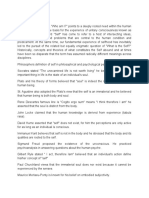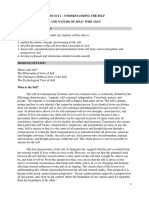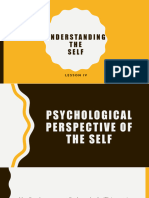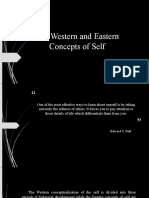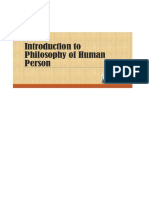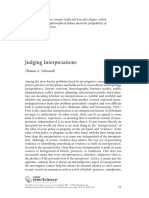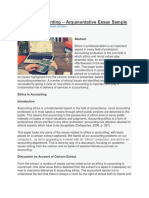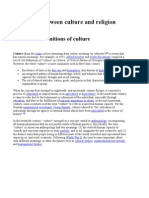0% found this document useful (0 votes)
14 views6 pagesSELF
The document discusses the concept of the 'empty self' arising from modern psychology's failure to consider historical and cultural contexts. It describes how individuals in contemporary Western cultures may feel inner emptiness due to weakened social bonds and isolation. The emergence of the empty self after WWII is then examined, focusing on loss of community, an emphasis on individualism, consumerism, and increased spiritual and psychological needs.
Uploaded by
pizzyismybae2001Copyright
© © All Rights Reserved
We take content rights seriously. If you suspect this is your content, claim it here.
Available Formats
Download as DOCX, PDF, TXT or read online on Scribd
0% found this document useful (0 votes)
14 views6 pagesSELF
The document discusses the concept of the 'empty self' arising from modern psychology's failure to consider historical and cultural contexts. It describes how individuals in contemporary Western cultures may feel inner emptiness due to weakened social bonds and isolation. The emergence of the empty self after WWII is then examined, focusing on loss of community, an emphasis on individualism, consumerism, and increased spiritual and psychological needs.
Uploaded by
pizzyismybae2001Copyright
© © All Rights Reserved
We take content rights seriously. If you suspect this is your content, claim it here.
Available Formats
Download as DOCX, PDF, TXT or read online on Scribd
/ 6







